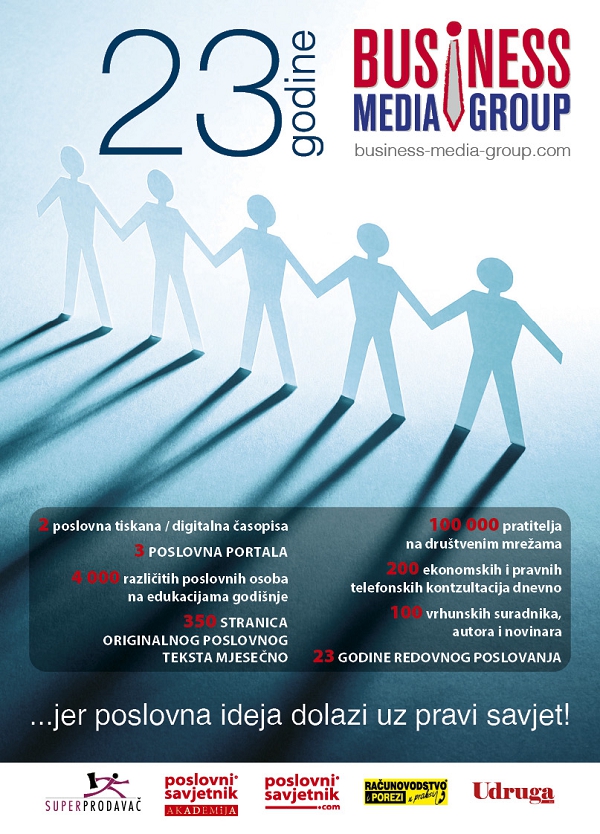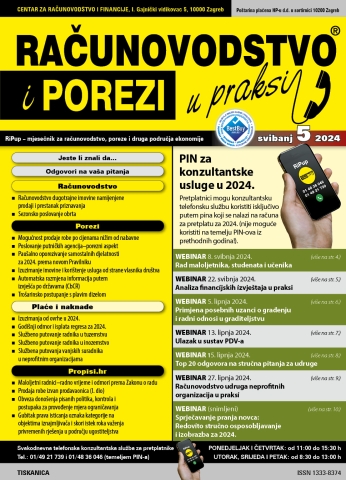John Lodder: What strategy do you have to engage your people and yourself?
During the pandemic many companies went down, on the other hand we saw many new start-ups and many companies growing fast. We saw an enormous number of innovations around the globe. Technological innovations doubled, like drones, robots, and Artificial Intelligence, a.o. for maintaining corona measures, monitoring the development and spreading of the virus and for remote working. Or think of nanotech, synthetic biology and gene treatment technologies that were developed much faster to improve diagnostics, hospital treatments and vaccines.
In this column I dive deeper into the Human Side within organizations
During the pandemic much research is done about the ‘future of work, workplaces, organizations and leadership’. In my last columns I wrote about many innovations and improvements for change and reinvention of organizations. I showed statistics that average company lifetimes are shortening to 3-4 years, meaning that leaders need to constantly rethink their organizational positioning, strategy, desired culture, structure, the position of employees and your own role as a Leader. I gave examples of companies around the globe that are already working with their people on such issues by searching for and experimenting with concrete actions to improve. These companies will be winners, certainly in the short term.
We see countries that already in June 2021 managed to be back on their high production-, export- and their low unemployment levels of April 2020. These countries and their companies are proof that with a good strategy and HR-policy, a fast recovery is possible.
Low unemployment also has another effect. A country as the Netherlands has not enough people to fill in the many vacancies that companies have, which is an immediate risk for future growth. In the USA 140,000 people resigned their jobs last June voluntarily because they want better quality jobs and/or working conditions.
In most countries people want to keep on working remote, others are afraid to go back to the workplace because they feel not safe with too many not vaccinated colleagues.
People had hard times during this pandemic, 45% of people globally say their own life has been affected “a lot” by the coronavirus situation. How did your people come back at work? How is the mental state of your employees? How do they feel? What are their needs? What are their expectations?
Gallup did its 20th global survey in 2020 till March 1, 2021 in 116 countries and presented the conclusions in June 2021.
I give you an Executive Summary, the most important results that you might like to discuss with your employees.
Because, in my view, the Leader has to provide and show trust, involvement, respect, empathy etc. toward her / his employees. Why?
Simply said: the more open the relation between the leader and her / his employee, the better atmosphere, the better engagement, the better quality, the better results the leader gets.
The full report can be downloaded at: https://www.gallup.com/workplace/349484/state-of-the-global-workplace.aspx
What is Employee Engagement?
Employee engagement reflects the involvement and enthusiasm of employees in their work and workplace. Gallup categorizes employees as engaged, not engaged or actively disengaged. Employees can become engaged when their basic needs are met and when they have a chance to contribute, a sense of belonging, and opportunities to learn and grow.
- Engaged employees are highly involved in and enthusiastic about their work and workplace.
They are psychological “owners”, drive performance and innovation, they move the organization forward.
- Not engaged employees are psychologically unattached to their work and company. Because their engagement needs are not being fully met, they’re putting time - but not energy or passion - into their work.
- Actively disengaged employees aren’t just unhappy at work; they are resentful that their needs aren’t being met and are acting out their unhappiness. Every day, these workers potentially undermine what their engaged coworkers accomplish.
Gallup found that seven in 10 employees are struggling or suffering, rather than thriving, in their overall lives. Eighty percent are not engaged or are actively disengaged at work. This lack of engagement costs the global economy US$ 8,1 trillion, nearly 10% of GDP, in lost productivity each year.
How much would it cost your organization?
As employers rethink their workplaces in 2021, they have lessons to learn from 2020.
Physical health, loneliness, financial hardship and community support, among other factors, affect the involvement, enthusiasm and productivity of workers in both good and bad times.
Successful corporations now and in the future not only will generate profits, but especially need to generate thriving employees. Most important, leaders need to recognize the influence of employee wellbeing and employee engagement on workforce resilience.
Globally, employee engagement decreased by 2 percentage points from 2019 to 2020, and employees reported higher worry, stress, anger and sadness in 2020 than they had in the previous year. Given hospitalizations and deaths due to COVID-19, as well as lockdowns, closed schools, increased remote work and unemployment, the above outcomes are not surprising. They represent the frustrations and struggles of millions of workers across the planet.
However, there are significant differences in how employees across regions and countries experienced 2020. Nearly half of employees in the United States and Canada experienced a lot of stress before the pandemic, in 2019, and they were even more stressed in 2020, with 57% reporting high stress - far above the global average. But, employee engagement in the U.S. and Canada also increased.
In contrast, Western European employees’ engagement remained dismally low, but their rise in negative emotions was nominal. In fact, stress and anger decreased in Western Europe, compared with 2019.
Life Evaluation – The question we asked employees
Please imagine a ladder with steps numbered from zero at the bottom to 10 at the top. Suppose we say that the top of the ladder represents the best possible life for you, and the bottom of the ladder represents the worst possible life for you. On which step of the ladder would you say you personally feel you stand at this time? (0-10). Just your best guess, on which step do you think you will stand in the future, say about five years from now? (0-10)
The question assesses how people feel about their lives currently (“best life present”) and how they expect to feel about their lives in five years (“best life future”).
Individuals with high life evaluation are considered to be “thriving.” They have positive views of their present life situation (7 or higher on best life present) and positive views of the next five years (8 or higher on best life future).
Thriving employees report significantly fewer health problems; less worry, stress, sadness, depression and anger; and more hope, happiness, energy, interest and respect. (See “Appendix 3: Support Information” for related details.)
Nordic countries - Finland (85%), Denmark (79%), Iceland (76%), Sweden (71%) and Norway (69%) - and the Netherlands (76%) have the highest life evaluations in the world.
Corporate Leaders: Are Your Employees Engaged and Thriving?
Over the last decade, employee engagement has been rising. Millions more employees than in previous years are excited to come to work each day, have a chance to do what do they best, feel connected to their coworkers and are motivated by their organization’s purpose. This is great news.
Even so, employee engagement remains dismally low - at 20% globally.
This means that a large majority of employees in the world are either watching the clock or actively opposing their employer. Employees’ disengagement creates a drag on productivity, innovation and organizational change.
If 80% of an organization’s employees are not engaged at work, the organization’s resilience during a crisis will be at high risk, and leaders won’t be able to consistently reach their goals - there is no way for a leader to be effective when their people aren’t paying attention to them. With the current global levels of employee engagement, average corporations fight themselves daily for minimal gains in productivity. It does not have to be this way: Proven is that those organizations with extremely low engagement can make changes that produce a high percentage of engaged employees of 70% or higher.
Summary of important numbers
I made this summary on 4 levels: Global, Western Europe, Eastern Europe and Croatia.
|
Effect of the covid-19 pandemic |
|
WESTERN |
EASTERN |
|
|
on employees. |
GLOBAL |
EUROPE |
EUROPE |
CROATIA |
|
Life Impact (affected a lot) |
45% |
36% |
37% |
** |
|
Other impacts: |
|
|
|
|
|
Lost Pay |
50% |
24% |
34% |
** |
|
Worked fewer hours |
49% |
29% |
34% |
** |
|
Temporarily stopped working |
53% |
24% |
34% |
** |
|
Lost a job or business |
32% |
6% |
11% |
** |
|
Daily negative emotions: |
|
|
|
|
|
Daily worries |
41% |
36% |
39% |
54% |
|
Daily stress |
43% |
39% |
41% |
53% |
|
Daily anger |
24% |
13% |
22% |
10% |
|
Daily sadness |
25% |
19% |
22% |
14% |
|
Overall: |
|
|
|
|
|
Life evaluation (Thriving) |
32% |
55% |
41% |
29% |
|
ESG satisfaction |
|
|
|
|
|
Environmental |
62% |
44% |
38% |
36% |
|
Social |
14% |
6% |
10% |
18% |
|
Governance |
69% |
51% |
75% |
*** |
|
|
|
|
||
|
Employee engagement |
22% |
11% |
21% |
12% |
* Source: State of the Global Workplace 2021 Report (Gallup, June 2021)
** Gallup did not publish data for ‘other impacts’ at Croatian level.
*** Gallup did not publish data at Country levels because of its sensitivity.
How to increase your Organizational Success: Employee Engagement + Thriving Wellbeing
- Engagement - reflects what happens at work.
- Wellbeing - includes work and all other experiences.
As this past year showed so clearly, experiences outside work greatly affected work itself. Wellbeing is not just a COVID-19-related issue. All daily negative emotions among employees have been rising since 2009.
Daily Negative Emotions
This question was to measure the responses to the levels of negative emotions: ‘Did you experience the following feelings during A LOT OF THE DAY yesterday? How about worry, stress, anger, sadness?’
Mental health, emotional strain, social isolation, financial shocks and caregiving responsibilities all influence work performance over the long term. Over time, the negative side of these experiences can lead to burnout.
Gallup has identified five elements that make up overall wellbeing:
Many companies already have physical wellness programs, but Gallup found that wellbeing is about more than physical health. When people are thriving in all five areas, they have better health outcomes than when thriving in just physical wellbeing.
Employees who score high on all five elements report 41% fewer unhealthy days than employees who score high on physical wellbeing alone.
Corporations need employees who are consistently high in energy, focused, innovative, agile and resilient. In other words, they need employees who are engaged at work and thriving in their overall life. Employees, who are engaged but not thriving, typically feel high levels of stress, worry, anger and sadness, despite their positive experiences at work. These emotions are all bellwethers of burnout.
But, when employees are engaged and thriving, the risk of burnout declines sharply.
Some leaders believe that they shouldn’t concern themselves with their employees’ non-work-related life experiences. This should no longer be the case! To be competitive and maximize business performance in today’s workplace, employers are responsible for fostering wellbeing by:
- developing their employees’ strengths to help foster long-term careers
- creating family-friendly policies and encouraging friendships at work
- providing financial services and education
- encouraging physical activity and making it easier to choose healthy foods
- celebrating those who give back to the community through service
- and?… what exactly in your company? Exchange about this with your employees!
Of course, creating a culture in which employees are engaged and thriving requires more than policies.
Gallup has found that leaders play a critical role, leaders account for 70% of the variance in team engagement, and for leaders to positively influence employee wellbeing; they must be upskilled from boss to coach so that they can have honest, meaningful, developmental conversations with their team members. No wellbeing program will be effective until employees trust that their leaders truly care about them as a person.
Some specific results to reflect upon as Leader
Leaders need to talk with their people and exchange practical experiences from the workplace.
This image shows that 97% of German managers feel they are doing a good job, unfortunately 69% of their people have other experiences.
As a Leader one could doubt and discuss the results….or….one could start talking with her/his employees.
What would be the most effective and constructive approach?
14% of employees in France, Germany and Spain say they were not treated with respect all day on the previous day. Look at the difference engagement of employees has on ‘feeling respected’.
(Note JL: Cultural research shows that in these countries management scores high on authoritarian styles.)
69% of employees say corruption is widespread within businesses located in their country. We see that employees’ perceptions of corruption in their Company, highly effects their engagement.
How can Leaders Thrive?
Of course, not all leaders are really struggling or just coping in their leadership. In fact, our research suggests
that 55.4% of leaders are leading well, despite struggles. So, what makes it possible for them to THRIVE?
Gallup’s research found that it’s not just about what we DO as leaders, but rather how we SHOW UP.
And much of that is shaped by our mindsets – the lens through which we see the world.
Leaders who THRIVE have a mindset that enables them to be:
T-Tailored
- They tailor their Leadership to the contexts in which they and their teams find themselves.
- They understand that some problems have clear fixes and benefit from a “tell-and-control” leadership approach.
- However, complex challenges benefit from a more collaborative and inclusive “ask-and-invite” leadership style.
- When did you last flex your leadership to meet the needs of a specific situation?
- How might you be mindful of flexing your approach when needed?
H - Human Centered
- With humble curiosity Leaders seek to understand the hopes and strengths of others.
- They understand that people don’t function like machines but are living systems that need meaningful work and connections in order to consistently do their best work.
- Do you know what makes work meaningful for your team?
- When might you be able to ask if or how this is changing for them?
R - Realistic
- They embrace instability, disruption, and unpredictability for the possibilities that they bring.
- They understand that most leaders struggle to accurately forecast more than 150 days ahead, so instead of weighing their teams down with unrealistic plans they help their people focus on surfacing real-time possibilities and adjusting their efforts as needed.
- How have you helped your team to embrace disruption and uncertainty recently?
- What might you do to help them thrive even amidst disruption and uncertainty?
I - Inclusive
- They are effective allies and invite different perspectives, experiences, and ideas into conversations.
- They understand that no one “expert” has all the answers – even if you are the leader – and instead hold-up, honor, and value the wisdom of the different perspectives and voices around them.
- How often do you invite others with different perspectives and experiences to share their ideas with your team?
- How might you be a better ally for marginalized voices in your team?
V - Value Driven
- They deliver value by creating psychologically safe spaces for learning and positive outcomes to unfold.
- They understand that the pay-offs of most achievements are short-lived, and that long-term growth depends on people’s courage and confidence to keep experimenting and learning rather than being blamed and shamed for mistakes.
- How do you share your failures and learning experiences – even the embarrassing ones – with your team?
- What can you do to make it feel safer for them to share their setbacks and mistakes with each other more openly?
E - Energizing
- They prioritize coaching conversations with their people to invite ownership and foster accountability.
- They understand that healthy and effective working relationships are not built on coercion and compliance, and instead take responsibility for finding ways to bring out the best in their people to supercharge wellbeing, performance, and commitment.
- How regularly do you have coaching conversations with your team?
- How might you integrate more coaching questions into your catch ups?
Gallup found that leaders who have a THRIVE Mindset are more likely to report higher levels of organizational commitment, engagement, and individual and group performance.
These Leaders and their teams are more likely to report higher levels of inclusivity, psychological safety, and wellbeing.
Let’s be clear – it is not that their THRIVE Mindset ensures everything goes perfectly.
After all, these Leaders still work in the real world with all its unpredictability, uncertainty, disruptions and messiness.
It is that their THRIVE Mindset enables them to see the inevitable struggles every leader faces as an invitation to learning and growth rather than a sign that they are not up to their role. They understand that great leadership involves both thriving and struggle, and they have the confidence and courage to embrace both.
What if the world's broken workplace was suddenly fixed?
Imagine if all businesses worldwide could double real employee engagement from 20% to 40%. That would change capitalism -- and the world.
Whether you run the executive committee, a customer team, a department or branch or store, the fix is to maximize the potential of each team member, create high collaboration and drive team success with customers. That is the job of the Leader.
Breakthrough:
Gallup discovered -- through studying what the best Leaders do differently -- that great Leadership is an act of coaching, not one of directing and administrating.
One of Gallup's most famous leadership breakthroughs, based on meta-analytics of 100 million employee interviews, is that a full 70% of the variance between highest engaged teams and persistently disengaged teams is just the leader.
There really is a silver bullet to running a culture of high performance and high development.
It is always the Leader! (Like water always drips down, so drips behavior of leaders, JL)
Gallup discovered -- through studying what the best leaders do differently -- that great Leadership is an act of coaching, not one of directing and administrating.
All the treatments we are taught in business school or get from our HR department -- rating forms and feedback, giving employees flex hours and free nuts and bananas -- are fine, but they don't matter.
There is little to no connection between these activities and mental health outcomes (lower stress and burnout), let alone connections to customers and shareholders.
It is just the Leader! Write it down because it might be oddly difficult to remember.
So, if you say: "I know intuitively this is true.”
“But, I didn't know it explained 70% of the variation, and I still don't know exactly what to do."
Gallup's advice:
Accept the new will of the world. Gallup finds what the whole world wants is a good job. This is especially true for millennials and even more so for Generation Z. They actually want to learn and grow. The key is to address the "learn and grow", not the free stuff. Announce you are transforming your culture from administrating teams to coaching teams. This is another game-changer. Announce a change in the actual practice of Leadership within your organization. Cancel all rating forms.
Define the change exactly this way: We lead through a habit of having one meaningful coaching conversation per week with each team member!
This one coaching conversation per week can be in person, on the phone, email, Zoom, at coffee or standing in the hallway or elevator.
This is a highly researched finding and if you apply this it will immediately change your culture.
The full report can be downloaded at: https://www.gallup.com/workplace/349484/state-of-the-global-workplace.aspx















